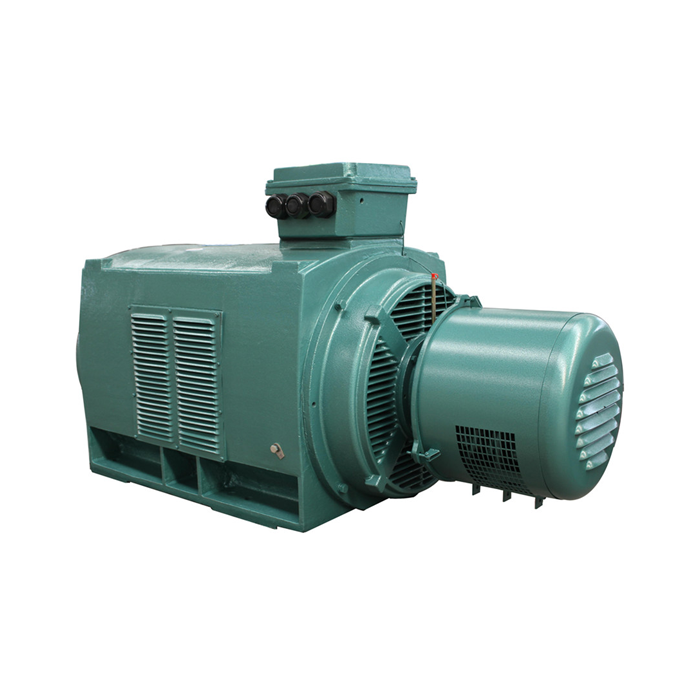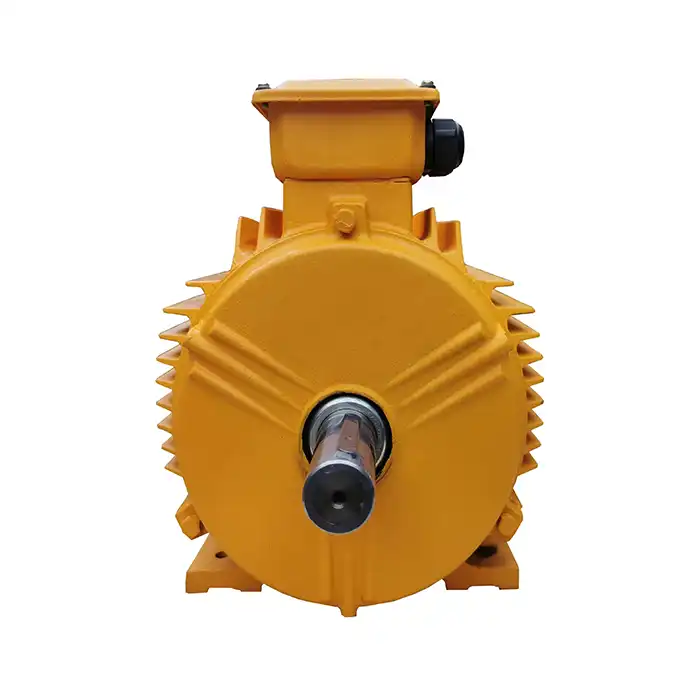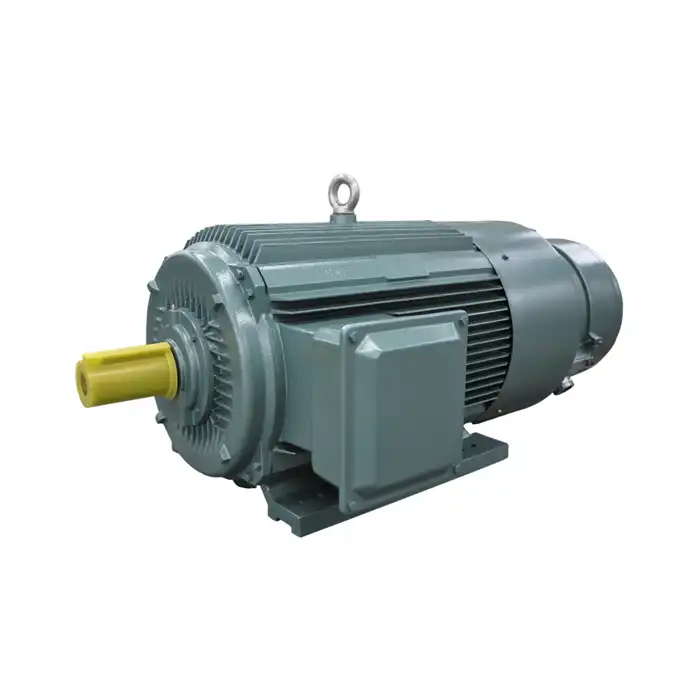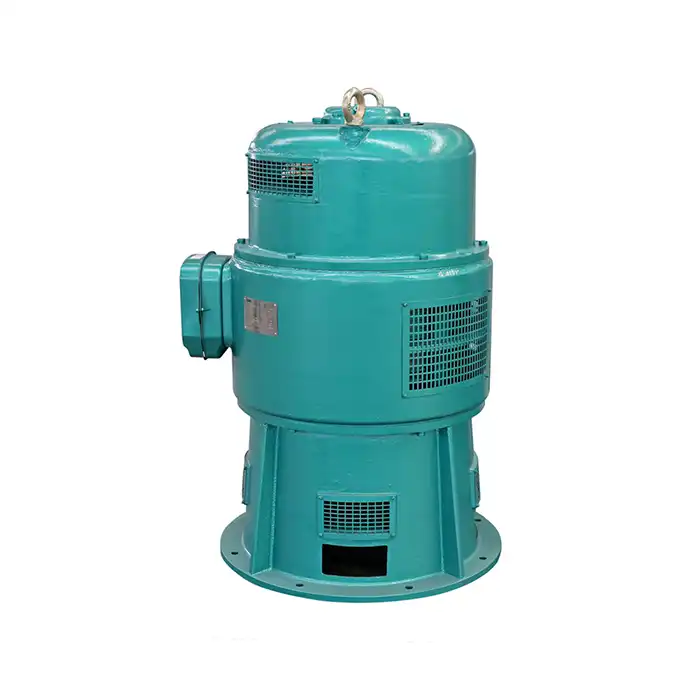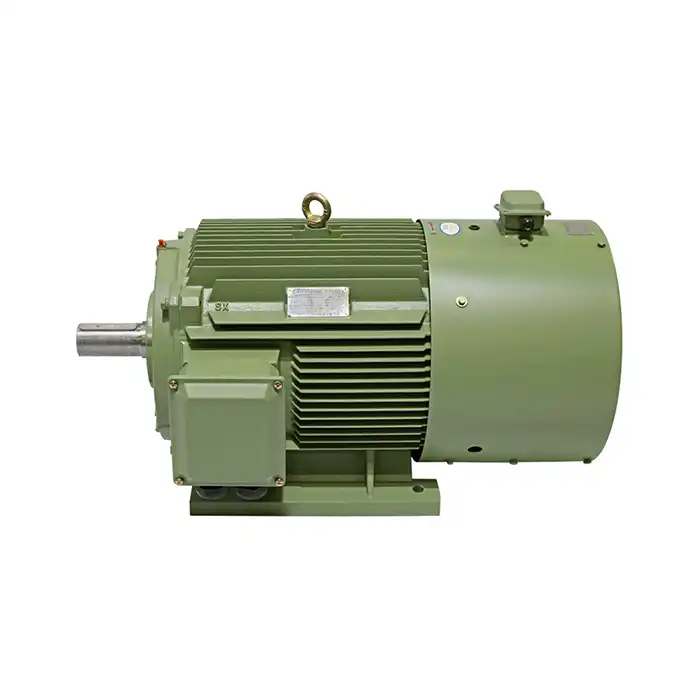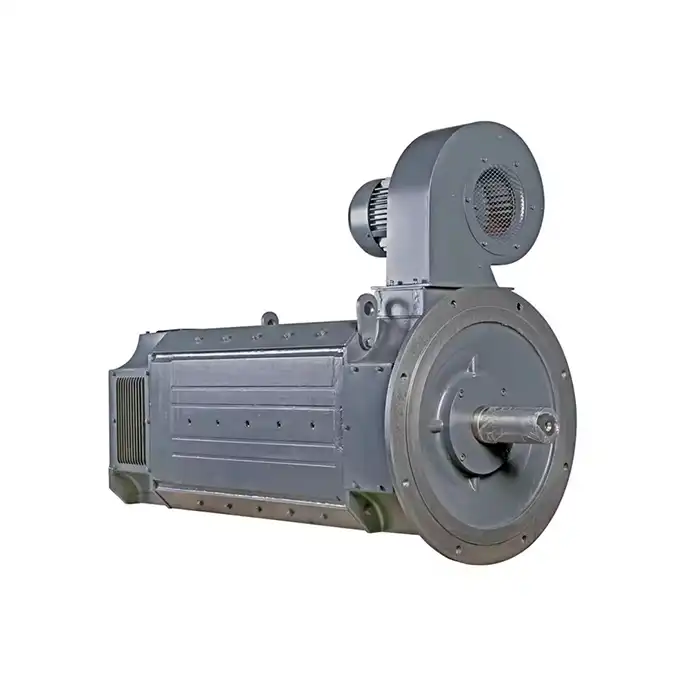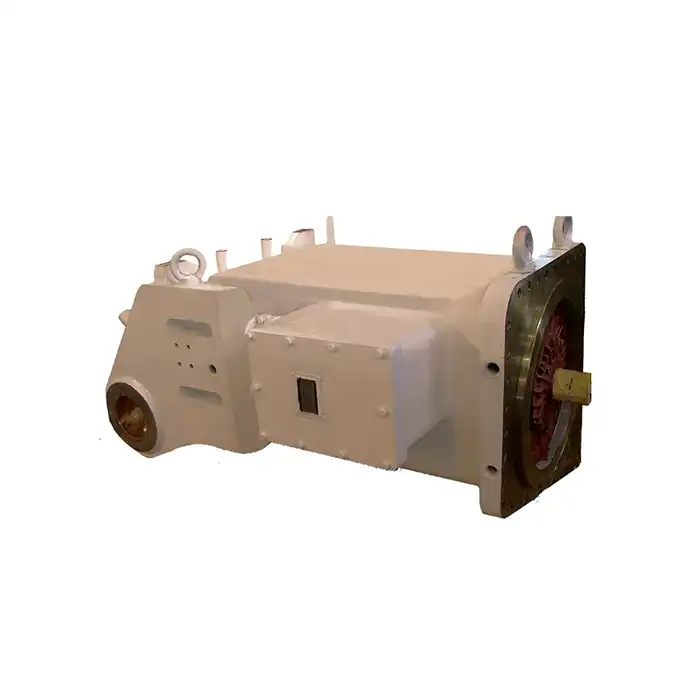Torque-Speed Characteristics of Slip Ring Wound Rotor Motors
Slip ring wound rotor motors are a crucial component in many industrial applications, offering unique advantages in terms of torque control and speed regulation. These motors, with their adjustable rotor resistance, provide excellent flexibility for various heavy-duty operations. In this comprehensive guide, we'll examine the torque-speed characteristics of slip ring wound rotor motors, their advantages over squirrel cage motors, and how to optimize their performance.

Why do slip ring motors provide better starting torque than squirrel cage?
Slip ring wound rotor motors are known for their superior starting torque capabilities compared to squirrel cage induction motors. This advantage stems from the unique design and operational characteristics of slip ring motors.
Adjustable Rotor Resistance
The primary reason for the improved starting torque in slip ring motors is the ability to add external resistance to the rotor circuit. This feature allows for precise control over the motor's torque-speed curve, particularly during startup.
When starting a slip ring motor, a high resistance is initially connected to the rotor circuit through the slip rings. This high resistance results in several beneficial effects:
- Increased rotor impedance
- Reduced rotor current
- Higher rotor voltage
- Improved power factor
These factors combine to produce a significantly higher starting torque compared to squirrel cage motors, which have a fixed rotor resistance.
Torque-Speed Curve Manipulation
The ability to adjust rotor resistance allows for manipulation of the torque-speed curve. By gradually reducing the external resistance as the motor accelerates, it's possible to maintain a high torque output across a wide speed range. This characteristic is particularly valuable in applications requiring high starting torque and smooth acceleration, such as hoists, conveyors, and heavy machinery.
Reduced Inrush Current
Another advantage of slip ring motors is their ability to start with a lower inrush current. The external rotor resistance limits the initial current draw, reducing stress on the power supply system and minimizing voltage dips. This feature is especially beneficial in environments with weak power grids or where multiple large motors need to be started simultaneously.
How to interpret torque-speed curves for wound rotor applications
Understanding and interpreting torque-speed curves is crucial for optimizing the performance of slip ring wound rotor motors in various applications. These curves provide valuable insights into motor behavior under different operating conditions.
Components of a Torque-Speed Curve
A typical torque-speed curve for a slip ring motor includes the following key elements:
- Starting torque
- Pull-up torque
- Breakdown torque
- Full-load torque
- No-load speed
Each point on the curve represents a specific operating condition, helping engineers and operators predict motor performance across its speed range.
Influence of Rotor Resistance
One of the most important aspects of interpreting torque-speed curves for wound rotor motors is understanding the impact of rotor resistance. As the external resistance is varied, the shape of the torque-speed curve changes significantly:
- High resistance: Results in a flatter curve with higher starting torque but lower maximum speed
- Low resistance: Produces a steeper curve with lower starting torque but higher maximum speed
By analyzing these curves, it's possible to select the optimal resistance for a given application, balancing factors such as starting torque, acceleration time, and energy efficiency.
Application-Specific Interpretation
Different applications require different torque-speed characteristics. For example:
- Hoisting applications: May require high starting torque and precise speed control
- Conveyor systems: Might need smooth acceleration and constant torque over a wide speed range
- Pumps and fans: Could benefit from variable speed operation for energy efficiency
By carefully interpreting the torque-speed curves, engineers can match the motor's characteristics to the specific requirements of each application, ensuring optimal performance and efficiency.
What external resistance values optimize motor performance?
Selecting the appropriate external resistance values is crucial for optimizing the performance of slip ring wound rotor motors. The optimal resistance depends on various factors, including the application requirements, load characteristics, and desired operating conditions.
Factors Influencing Optimal Resistance
Several key factors should be considered when determining the optimal external resistance values:
- Starting torque requirements
- Acceleration time
- Load inertia
- Speed range
- Energy efficiency considerations
Balancing these factors is essential for achieving the best overall performance in a given application.
Resistance Selection for Different Operating Phases
The optimal resistance value may vary depending on the operating phase of the motor:
- Starting phase: Higher resistance values are typically used to maximize starting torque and minimize inrush current. The exact value depends on the load's starting torque requirements and the acceptable acceleration time.
- Acceleration phase: As the motor accelerates, the resistance is gradually reduced to maintain high torque while increasing speed. This process is often automated using a controller or resistor bank.
- Running phase: Once the motor reaches its operating speed, the external resistance is usually minimized or completely removed to maximize efficiency.
Optimization Techniques
Several techniques can be employed to optimize the external resistance values:
- Computer simulations: Advanced software tools can model motor behavior under various conditions, helping to identify optimal resistance values.
- Field testing: Practical tests with different resistance values can provide real-world data for fine-tuning motor performance.
- Adaptive control systems: Modern motor control systems can automatically adjust resistance values based on real-time operating conditions, ensuring optimal performance across varying loads and speeds.
By carefully selecting and adjusting external resistance values, it's possible to achieve a balance between high starting torque, smooth acceleration, and efficient operation in slip ring wound rotor motors.
Energy Efficiency Considerations
While external rotor resistance provides valuable control over motor characteristics, it's important to note that energy is dissipated as heat in these resistors. This can impact overall system efficiency, especially if high resistance values are maintained during normal operation.
To maximize energy efficiency:
- Minimize resistance during steady-state operation
- Consider regenerative braking systems for applications with frequent stops and starts
- Explore the use of variable frequency drives in conjunction with slip ring motors for improved efficiency and control
Maintenance and Reliability
Proper selection and management of external resistance values can also impact motor reliability and maintenance requirements:
- Excessive resistance can lead to overheating and increased wear on slip rings and brushes
- Insufficient resistance during starting can result in high currents and potential damage to motor windings
- Regular inspection and maintenance of the resistor bank and control system are essential for long-term reliability
By considering these factors, engineers can optimize both performance and longevity of slip ring wound rotor motors in industrial applications.
Conclusion
Slip ring wound rotor motors offer unique advantages in terms of torque control and speed regulation, making them valuable assets in many industrial applications. By understanding their torque-speed characteristics and optimizing external resistance values, engineers can harness the full potential of these motors for improved performance and efficiency.
For industrial automation, manufacturing, process control, and energy sector professionals seeking high-performance motor solutions, Shaanxi Qihe Xicheng Electromechanical Equipment Co., Ltd. offers a range of slip ring wound rotor motors designed for reliability and efficiency. Our team of experts is ready to assist you in selecting and implementing the ideal motor solution for your specific application needs. To learn more about our power equipment solutions or to discuss your project requirements, please contact us at xcmotors@163.com. Let us help you optimize your industrial processes with our advanced motor technology.
References
- Smith, J.R. (2018). "Advanced Motor Control Techniques for Slip Ring Wound Rotor Motors". IEEE Transactions on Industrial Electronics, 65(3), 2234-2245.
- Johnson, A.L. & Thompson, R.M. (2019). "Optimization of Torque-Speed Characteristics in Industrial Motor Applications". Journal of Power Electronics, 19(4), 1021-1034.
- Brown, S.K. (2017). "Energy Efficiency Improvements in Slip Ring Motor Systems". Energy Conversion and Management, 152, 176-185.
- Zhang, L. et al. (2020). "Adaptive Resistance Control for Slip Ring Motors in Heavy-Duty Applications". IEEE Transactions on Industry Applications, 56(2), 1652-1661.
- Miller, T.J.E. (2016). "Comparative Analysis of Squirrel Cage and Wound Rotor Induction Motors". Electric Power Components and Systems, 44(3), 323-337.
- Patel, V.R. & Patel, H.M. (2021). "Performance Enhancement of Slip Ring Induction Motors Through Advanced Control Strategies". International Journal of Electrical Power & Energy Systems, 126, 106573.



